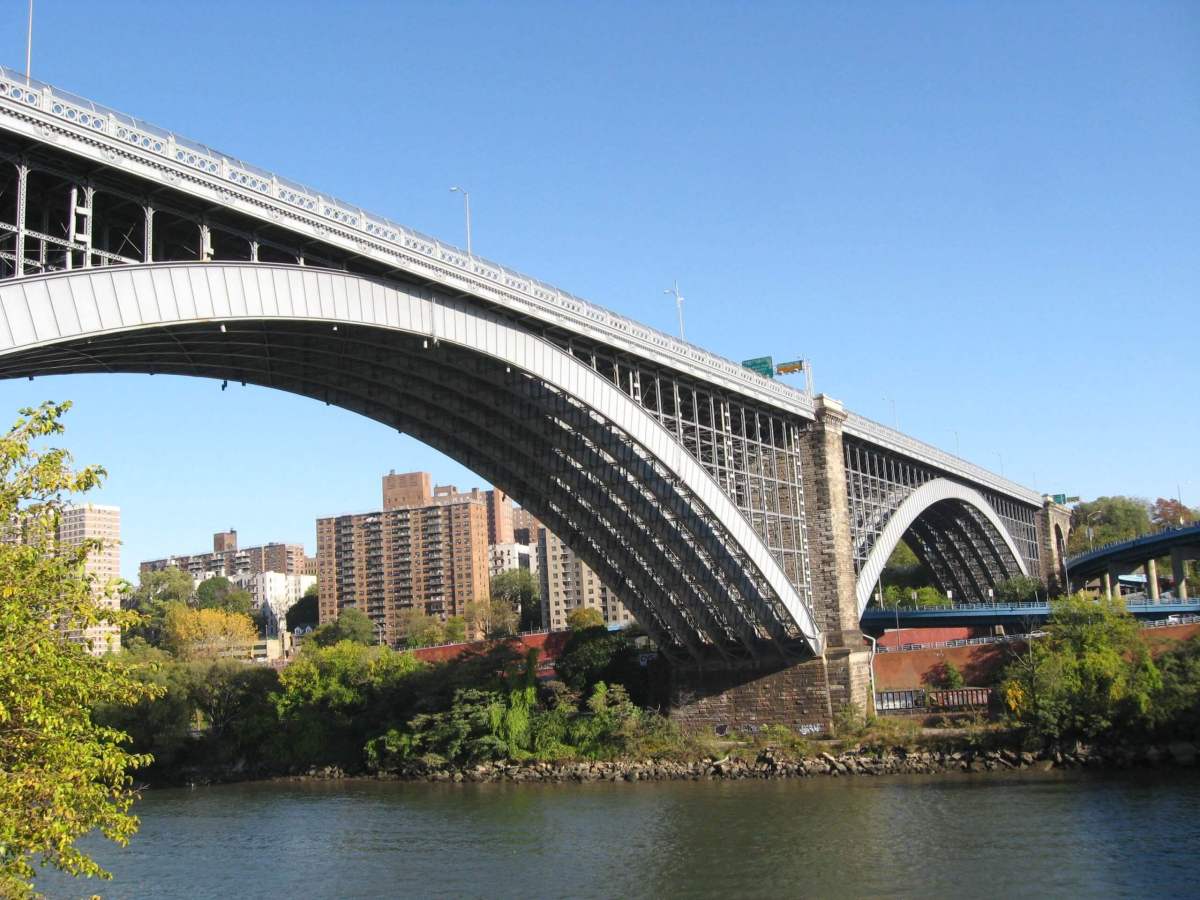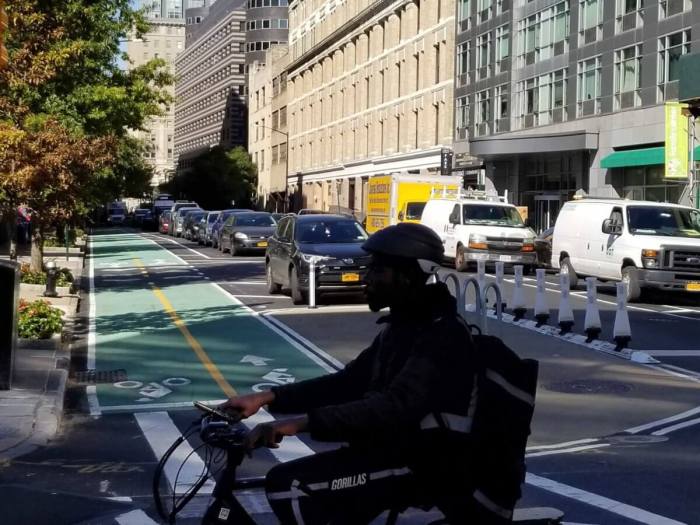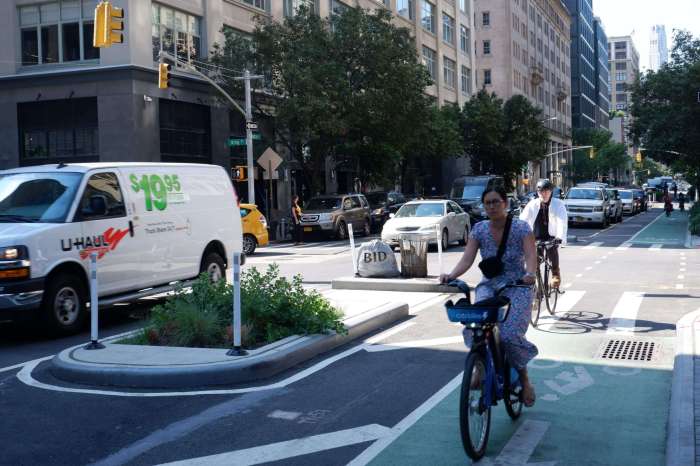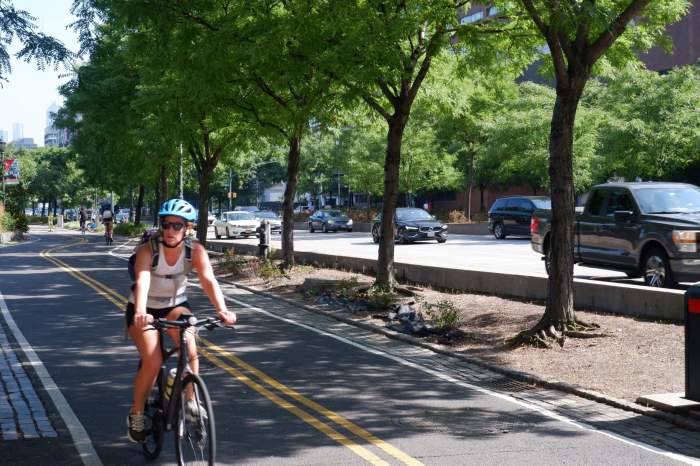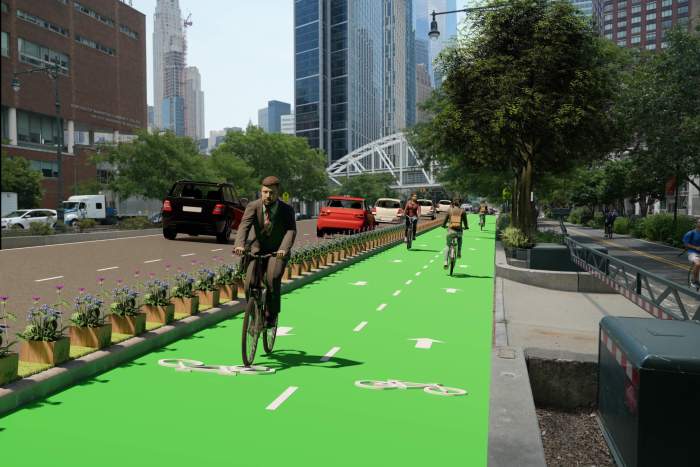The Washington Bridge between Manhattan and the Bronx may not be as large or iconic a crossing as the nearby George Washington Bridge over the Hudson River, but it could soon be the hottest ticket in town for area cyclists and straphangers.
The city’s Department of Transportation last week proposed redesigning the Washington Bridge — which spans the Harlem River connecting Washington Heights in Manhattan and Highbridge in the Bronx — to repurpose one motor vehicle travel lane in each direction to create a new dedicated bus lane for Bronx-bound buses, and a two-way protected bike lane for cyclists traveling interborough.
Such a redesign would be a first for a Harlem River crossing: of the 13 spans between Manhattan and the Bronx, none include either a dedicated bus lane or a protected bike lane. Two are exclusively railroad crossings, while one, the High Bridge, is only open to pedestrians and cyclists, and not 24/7. Several of the remaining ten technically are outfitted with a bike lane, but shared with a pedestrian path, resulting in conflicts over the right-of-way.
“DOT’s proposal for the Washington Bridge would greatly improve pedestrian and cycling access while speeding up service for nearly 70,000 daily bus riders,” said DOT spokesperson Vin Barone in a statement. “This design builds on our recent work to support safe, efficient, and sustainable transportation options, connecting to our 181st Street busway and new protected bicycle lanes on both sides of the bridge.”
The Washington Bridge is particularly hard to cross as a pedestrian or cyclist on the existing paths: those on both sides of the bridge are extremely narrow, only a few feet in diameter, and must be shared by walkers and bikers.
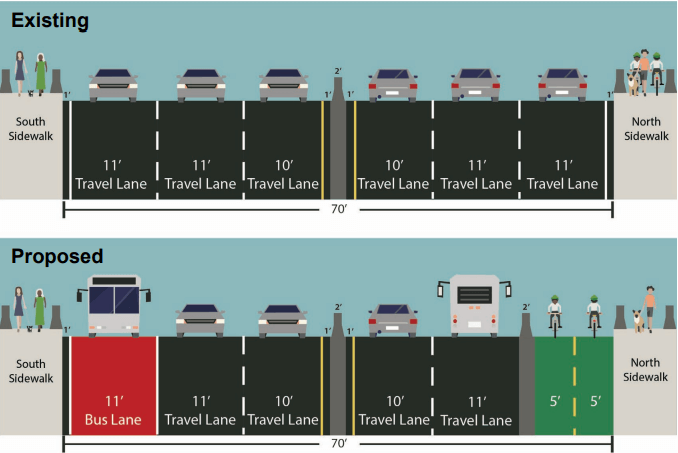
“They’re so narrow, they’re 3-and-a-half feet wide in some places,” said Lucia Deng, a Bronx resident and frequent crosser of the Washington Bridge on foot or bike. “So allowing for this protected bike lane means you pull all the cyclists, guys on mopeds, scooters, out of conflict from the pedestrians. So that’s huge.”
The proposal is the latest example of DOT rejecting the shared bike paths of yore in favor of dedicated, protected infrastructure. Most notably, the agency last year repurposed a vehicle travel lane on the Brooklyn Bridge as a bike lane, eliminating the hazardous arrangement of sharing the pedestrian path and doubling bike crossings over the 1883 East River crossing practically overnight.
Advocates have long slammed the department for constructing unprotected or effectively unprotected bike lanes that did nothing to stop motorists from traveling or parking in them.
The bus lane will only travel in one direction to “best accommodate the mode share on the bridge,” Barone said. The Washington Bridge is presently used by five different bus lines.
Manhattan and Bronx pols, including Borough Presidents Mark Levine and Vanessa Gibson, penned a letter to DOT in September beseeching the agency to make improvements to the bridge. DOT has been considering street redesigns on Harlem River crossings for years, issuing a report on potential improvements to be made to the spans in 2018.
Construction work since 2020 has taken one travel lane in each direction out of commission with no issue, Barone noted.
Deng posits that the bridge improvements will likely be a boon for those often traveling between Manhattan and the Bronx for the daily travails of life, as she does.
“181st Street is a commercial corridor, a lot of shopping. I go over to Washington Heights to do a lot of shopping,” Deng said. “And on the Bronx side, there’s a lot of schools and health providers. So on both sides, people need to get back and forth.”
With its presentation already fulfilled to the Bronx’s Community Board 4, DOT will continue community outreach in the coming weeks, with presentations to Manhattan CB12 this week and Bronx CB5 in December.



